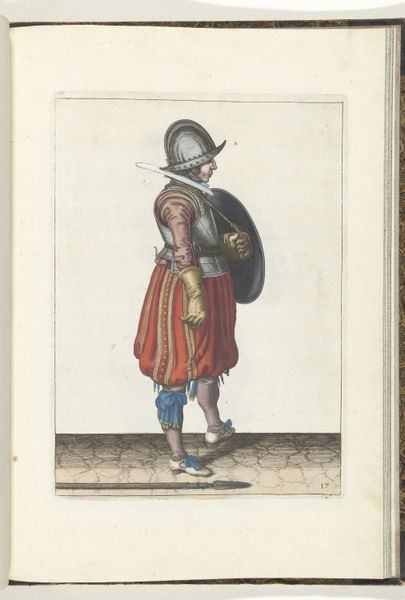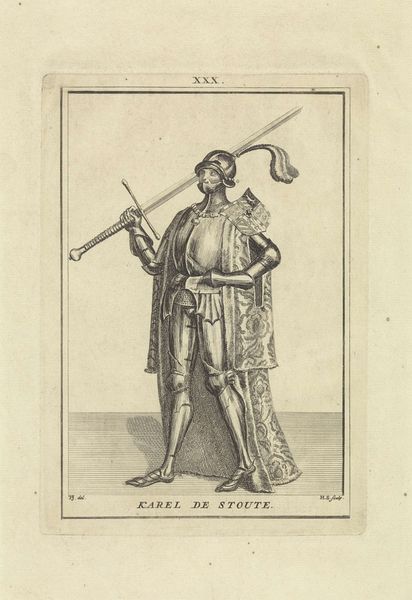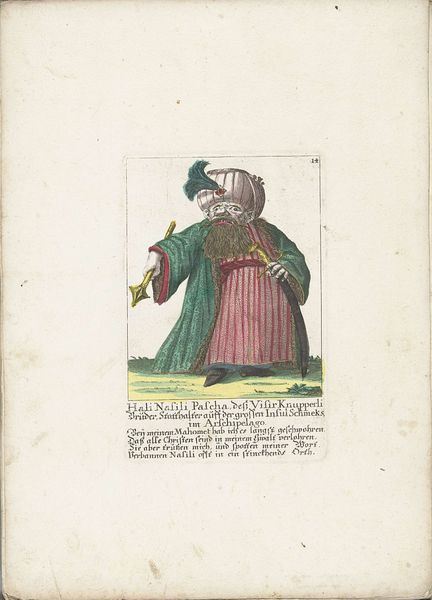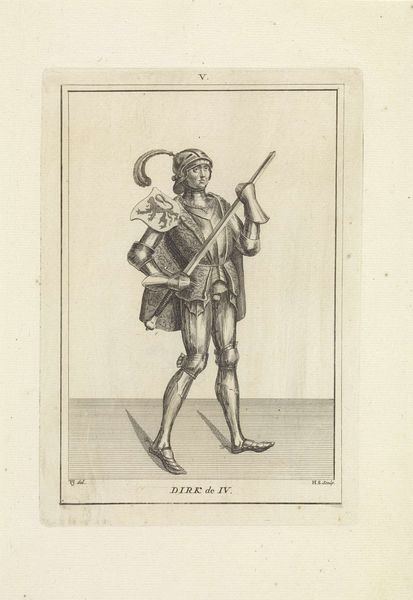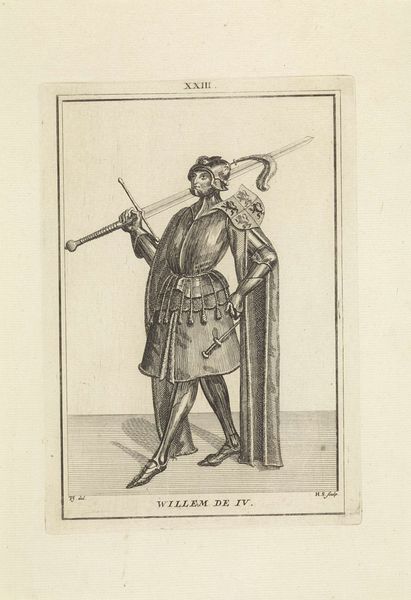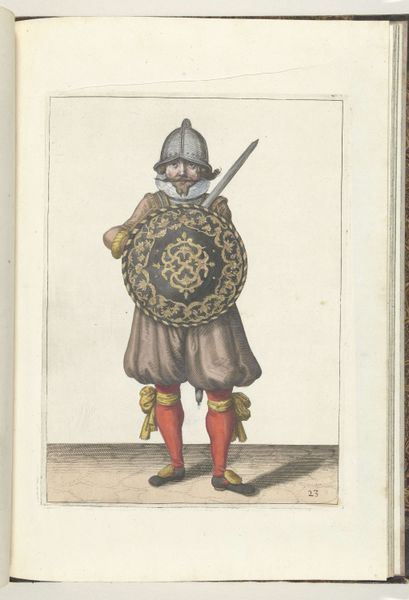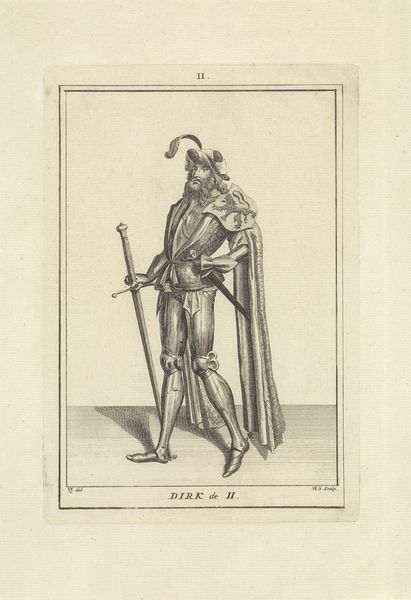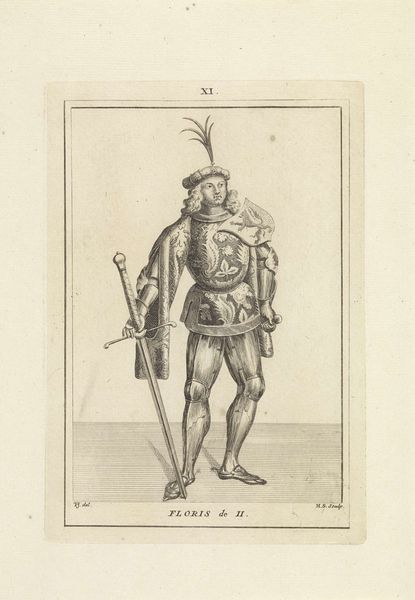
coloured-pencil, print, engraving
#
portrait
#
coloured-pencil
# print
#
mannerism
#
coloured pencil
#
history-painting
#
engraving
Copyright: Rijks Museum: Open Domain
Curator: Before us we have "Nobilis Gallies ornattus," a striking print from around 1594-1596. It can be found at the Rijksmuseum. The piece is unsigned, placing it within the fascinating realm of anonymous artistry. Editor: It immediately strikes me as peculiar. The coloring is so delicate, yet the pose has a sort of rigid formality, a very interesting combination to contemplate in its overall visual appeal. Curator: What interests me here are the materials. We're dealing with engraving, print and colored pencil. Consider the socio-economic implications: How does printmaking democratize portraiture for a burgeoning middle class eager to emulate aristocratic aesthetics? Who exactly was producing colored pencils in the late 16th century, and what were their ties to global trade? Editor: It's intriguing how the lines define his garments, each stroke shaping texture. Notice, especially, the elaborate ruff and the patterned doublet – an invitation to examine the language of ornamentation itself. The costume declares status; however, does it not simultaneously act as a performative element, a theatrical guise? Curator: Precisely! These portraits, these prints, were commodities in a society undergoing massive transformations. Look at the craftsmanship involved. Where did the engraver learn their craft? This piece allows us to question the established hierarchy between artist and artisan. Editor: Also consider the positioning of the sword, it almost appears an afterthought. While obviously a symbol of authority and status, it doesn't dominate the composition, rather blending with the green hues of the background landscape and patterned cape. Is this deliberate visual subversion of expectations perhaps? Curator: This invites analysis of access and power dynamics. By deconstructing this print, we expose the hidden labor and systems of exchange that underpinned artistic creation. Editor: In viewing the entirety of this image and the work performed with print and colored pencil, the artist communicates social status while hinting that this individual may feel trapped by their societal responsibilities. It seems this tension would cause him to reflect often. Curator: A point well noted. Analyzing prints such as "Nobilis Gallies ornattus," offers valuable information, illustrating not only the evolution of the artistic processes of the time, but equally shedding light on the socio-economic climate surrounding its creation. Editor: Ultimately, it provokes us to acknowledge the intricate connection between what appears, what is portrayed, and what exactly they represent, revealing complexities woven through both surface and design.
Comments
No comments
Be the first to comment and join the conversation on the ultimate creative platform.


